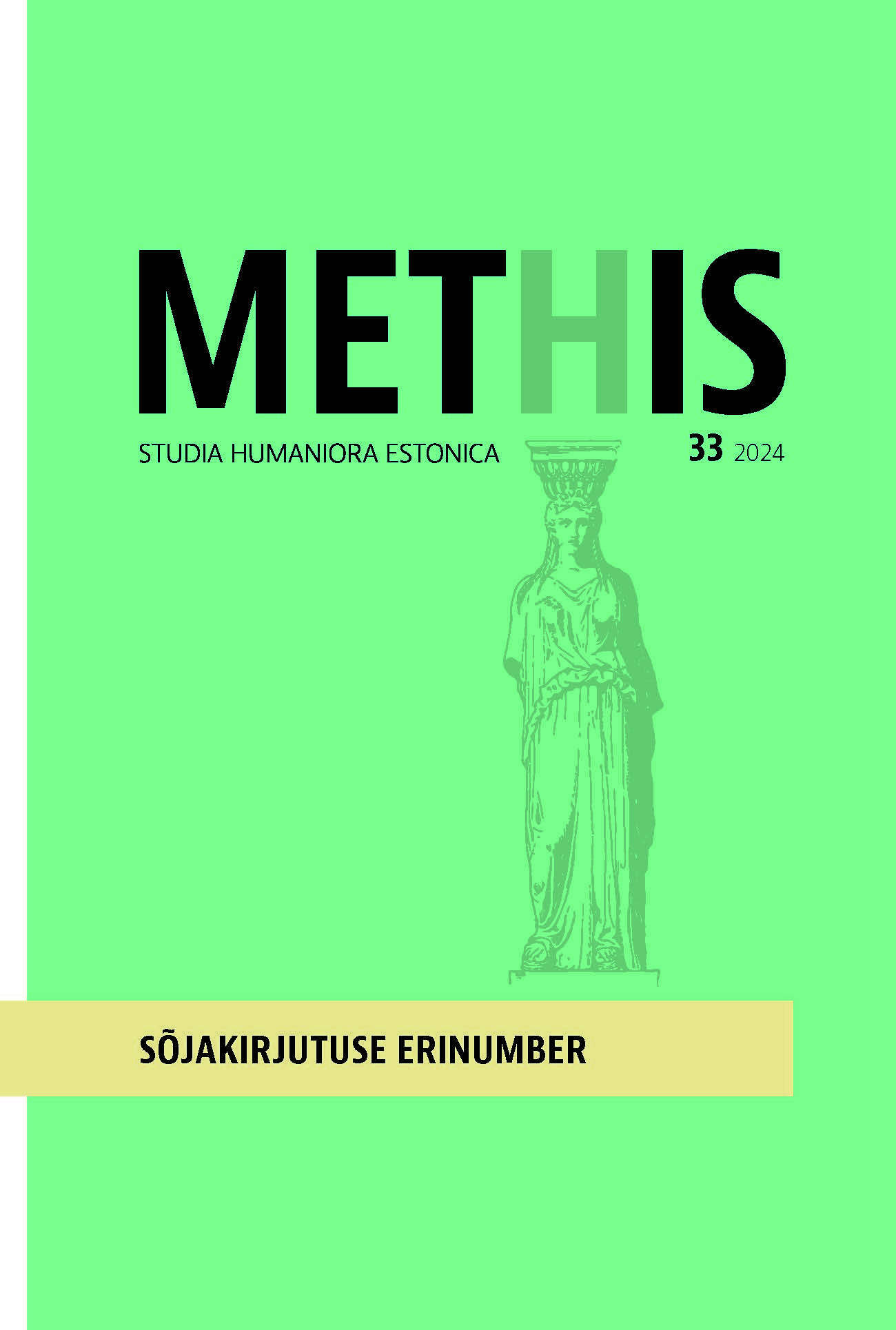„Putler kaputt“: ajaloomeemid Vene sõja kohta Ukrainas / “Putler kaput”: Historical Memes About the Russian War in Ukraine
DOI:
https://doi.org/10.7592/methis.v26i33.24138Keywords:
historical memes, historical motifs, legitimisation, memory, WWII, war in Ukraine, ajaloomeemid, ajaloolised motiivid, legitimeerimine, mälu, Teine maailmasõda, sõda UkrainasAbstract
Teesid: Uurimuses analüüsitakse ajaloomeeme Vene sõja kohta Ukrainas. Leidsime materjalis korduvad motiivid ning vaatlesime suhteid meemide ajalooalasete viidete ja hoiakute vahel. Selgus, et ajaloomeemid võivad olla vahendiks, kuidas õigustada tänapäeva sündmusi, tekitada vaenlaste suhtes üleolekut, anda hinnanguid sündmustele ning naeruvääristada või tunnustada olukorraga seostuvaid inimesi. Analüüsides meemides ajaloolisi viiteid, tuleb arvestada hoiakute mõjuga viidete valikule.
On 24 February 2022, Russia started the full-scale war in Ukraine. It provoked a lot of parallels with earlier conflicts in the vernacular reactions. There was an abundance of serious and humorous reactions and comments on the war, and the creation and dissemination of memes soared. Some of these used historical motives to underline the stance and message of the utterance. Historical memes are widely spread cultural units that explicitly relate to a particular historical event or personality. They are linked to memory practices that strengthen or help to propagate the meme. Historical memes reanimate the past with the help of historical artefacts (such as photos and videos), to adapt the memories of the past to the circumstances of the present. In times of war, or in any other conflict context, memoricity plays a significant role in narratives related to collective security and evokes affective responses by re-activating feelings associated with past experiences. Historical memes accentuate the emotional and intertextual load by tying contemporary commentary to emotionally charged historical and cultural motifs such as visual and/or verbal references to historical events, characters, catch phrases, etc. They function as shortcuts to basic categorisations of “us” and “them”, friends and enemies.
Our aim is to analyse how historical motives contribute to the meaning-making in memes: which historical memes are commonly used in the context of the Russia–Ukraine conflict from 2014, which recurrent motifs transpire in the data, and what the relationship between the historical references and stance of the memes is.
Memes offered a vernacular viewpoint on this conflict already since the illegal annexation of Crimea by Russia in 2014, and have been actively used throughout the years up to the ongoing military invasion. Some of the memes referred to (pre) historical events, but most of the references res ort to the history of 20th century. The motif of WWII was the most prevalent historical reference in memes on the 2022 Russian invasion of Ukraine that circulated in Ukraine, Russia and Belarus. While the references to ancient and mediaeval times are generally used to create a certain distance to the 2022 war and place its events and participants in a completely different context, references to the Russian Empire and WWII often draw direct parallels between historical and the contemporary events.
The instrumentalist approach to history that is consciously employed by the state can also function on a vernacular level by employing and recognising certain historical references in memes. The results show that historical memes can offer a way of legitimising contemporary events through history. The current actions and political decisions acquire firmness and justification if they are linked to historical events and actors that everyone remembers from school. They also contribute to establishing superiority over enemies, as the audiences find proof in their reasoning when they compare the past with the present. Memes ridicule or praise the people involved with the help of intertextuality pointing at well-known historical personae like Hitler, Goebbels or Stalin. In doing that, memes with historical references seem to demand a more nuanced cultural literacy, while other memes simply depend on the more basic shared cultural background of their creators and audiences to be understood and spread. Approaching historical memes from this angle, we can reveal the workings of intertextuality and their role in different kinds of memes, given that previous research has shown that not all the references and allusions need to be understood to find a meme funny.


